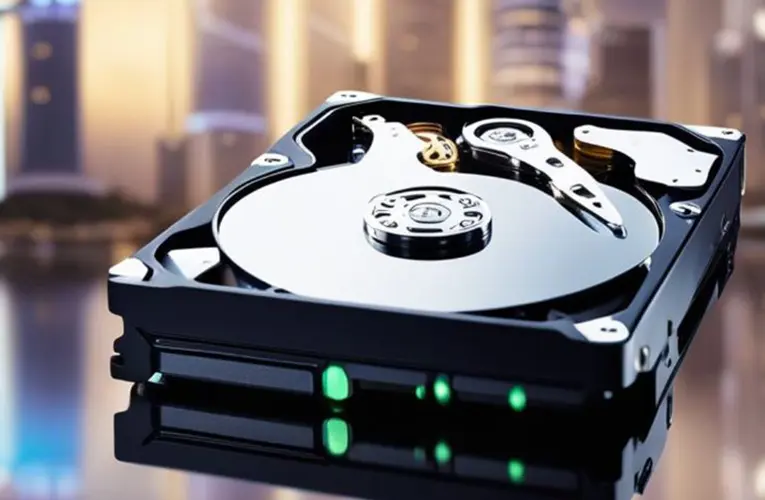“Stanford’s Approach to Data Recovery: Advancements in Technology and Techniques”
*Introduction*
Data recovery has emerged as a critical field in the realm of information technology, addressing the increasingly complex challenges of data loss and restoration. Stanford University, renowned for its pioneering research and innovation, stands at the forefront of advancing technologies and techniques in data recovery. Through interdisciplinary collaboration and cutting-edge research initiatives, Stanford continues to push the boundaries of what is possible in retrieving and preserving digital information. This comprehensive exploration delves into Stanford’s approach to data recovery, examining key advancements, technological innovations, and practical techniques that are shaping the future of this essential field.
*Historical Evolution of Data Recovery*
The evolution of data recovery can be traced back to the early days of computing when magnetic tapes and floppy disks were prevalent storage media. As technology progressed and digital information became more pervasive, the need for reliable methods to recover lost or corrupted data became increasingly apparent. Early techniques focused on basic error detection and correction, often involving manual intervention and rudimentary software tools.
Stanford University played a pivotal role in advancing the field through seminal research and the development of innovative data recovery methodologies. Early contributions from Stanford researchers laid the groundwork for modern data recovery techniques, including advancements in file system analysis, data redundancy strategies, and algorithmic approaches to data reconstruction.
*Technological Foundations of Data Recovery*
Central to Stanford’s approach to data recovery are the technological foundations that underpin effective retrieval and restoration of digital information. Key technologies include:
1. **Advanced File System Analysis:** Stanford researchers have pioneered techniques for analyzing file systems to identify and reconstruct lost or corrupted data. By understanding the underlying structure and metadata of file systems, researchers can develop algorithms and tools that enhance the efficiency and accuracy of data recovery processes.
2. **Data Redundancy and Error Correction:** Stanford has contributed significantly to the development of redundancy techniques such as RAID (Redundant Array of Independent Disks) and error correction codes. These technologies enable data to be stored across multiple disks or locations, ensuring data integrity and facilitating recovery in the event of disk failures or data corruption.
3. **Machine Learning and Artificial Intelligence:** Leveraging the power of machine learning and artificial intelligence, Stanford researchers are exploring new avenues for data recovery. AI algorithms can analyze patterns in data corruption or loss, predict potential recovery outcomes, and automate decision-making processes to optimize recovery efforts.
4. **Cloud-Based Data Recovery Solutions:** With the rise of cloud computing, Stanford has been at the forefront of developing cloud-based data recovery solutions. These solutions leverage distributed storage and computing resources to enhance scalability, reliability, and accessibility of data recovery services for organizations and individuals alike.
*Practical Techniques and Methodologies*
Stanford’s approach to data recovery encompasses a range of practical techniques and methodologies designed to address diverse scenarios of data loss and corruption:
1. **Data Carving:** Stanford researchers have refined data carving techniques, which involve identifying and extracting fragmented or deleted data from storage media. Advanced algorithms can reconstruct files from fragmented data blocks, even in cases where file system metadata is missing or damaged.
2. **Forensic Data Recovery:** Stanford’s expertise in forensic data recovery enables researchers and practitioners to retrieve digital evidence from storage devices in a forensically sound manner. This includes preserving chain of custody, maintaining data integrity, and complying with legal requirements in investigations and litigation.
3. **Real-Time Data Recovery:** With an emphasis on minimizing downtime and maximizing data availability, Stanford has developed real-time data recovery solutions that enable continuous operation and immediate recovery of critical data in high-availability environments.
4. **Data Privacy and Security:** Recognizing the importance of data privacy and security, Stanford integrates encryption, access controls, and secure data erasure techniques into its data recovery methodologies. This ensures that recovered data remains protected from unauthorized access and potential breaches.
*Interdisciplinary Collaboration and Future Directions*
Stanford’s leadership in data recovery is further underscored by its commitment to interdisciplinary collaboration and cross-cutting research initiatives. Researchers from diverse fields such as computer science, electrical engineering, statistics, and law collaborate to tackle complex challenges and explore new frontiers in data recovery. Future directions include:
– **Quantum Data Recovery:** Exploring the potential of quantum computing to revolutionize data recovery through enhanced computational power and novel algorithms capable of processing vast amounts of data with unprecedented speed and efficiency.
– **Bio-Inspired Data Recovery:** Drawing inspiration from biological systems, researchers are investigating bio-inspired algorithms and techniques for resilient data storage and recovery, mimicking the robustness and adaptability observed in natural organisms.
– **Ethical and Legal Implications:** Addressing ethical and legal implications of data recovery, including privacy concerns, data ownership rights, and regulatory compliance in an increasingly interconnected and data-driven world.
*Conclusion*
In conclusion, Stanford University’s approach to data recovery exemplifies its commitment to innovation, research excellence, and practical application in addressing the complex challenges of data loss and restoration. Through technological advancements, interdisciplinary collaboration, and a forward-thinking mindset, Stanford continues to shape the future of data recovery, pushing the boundaries of what is possible in preserving and retrieving digital information. As data continues to play a central role in society, Stanford’s contributions will remain pivotal in advancing the field and ensuring the reliability, security, and accessibility of digital data for generations to come.










